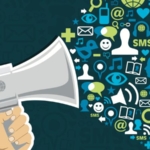The #1 Most Important Communication Tool
What’s the first thing that comes to your mind when you hear “communication tool”? Most people might think of phones or email, or apps that streamline communication. Some might even think of speaking or writing as basic, essential tools for communication.
But in reality, the most important tool we have for communication is our ears.
Listening is the key to effective communication. The ability to truly pay attention to what someone else is saying improves not only the quality of what we hear and understand, but also the enthusiasm and engagement of the other person involved in the communication.
Here’s why listening is crucial, and how you can improve your listening skills to significantly increase the effectiveness of your communication.
Being present in an age of distraction
Everyone has tried to hold a conversation with someone who’s busy texting, checking their messages, or using an app on their mobile device. Smartphones and tablets are fully integrated into our culture—so firmly that many people aren’t even aware of their reliance on these devices, or how often they’re using them.
If you’re used to multi-tasking, the first step to improving your communication is teaching yourself to listen without distractions. This means putting the phone down while you’re talking to someone, whether you’re at work, at home, or out and about. Implementing this practice yourself can also encourage others to ignore their devices and be more present, which strengthens your relationships.
Catching non-verbal cues
When you’re truly listening, you’re able to interpret non-verbal cues that can be easily miss if you’re distracted or not paying attention. Communication experts say that up to 85% of communication is non-verbal—including physical movements, eye contact, posture, and physiological presence.
Non-verbal cues can help you understand what someone is really saying, even if the context isn’t clear. Another important part of active listening is paying attention to your own non-verbal signals, and making sure you’re demonstrating your interest levels through good eye contact, attentive posture, and a lack of distracted gestures.
Speaking in listening mode
Great listeners are able to demonstrate their attention through verbal as well as non-verbal cues. Verbal listening strategies include extending an open invitation to talk, encouraging the other person with a few brief words, and asking open-ended questions.
Inviting someone to talk can be as simple as reading their body language and asking about it. For example, if a person seems upset, you might say, “You look like something is bothering you. Want to talk about it?” Or if someone seems happy or excited, you could say, “It looks like you’ve had some good news. Do you want to share?” Once you’re engaged in a conversation, you can use short, encouraging phrases like “I see,” or “Go on,” to indicate that you’re listening and want to hear more.
Finally, great listeners use questions to connect and engage with others. They ask an open-ended question—one that invites a more thorough answer. For example, instead of asking, “Are you worried about the meeting tomorrow?” a good listener would say, “How do you feel about the meeting tomorrow?”
Developing your listening skills can vastly improve your communication, and help you advance in both your business and your personal life. How do you show others that you’re listening?


